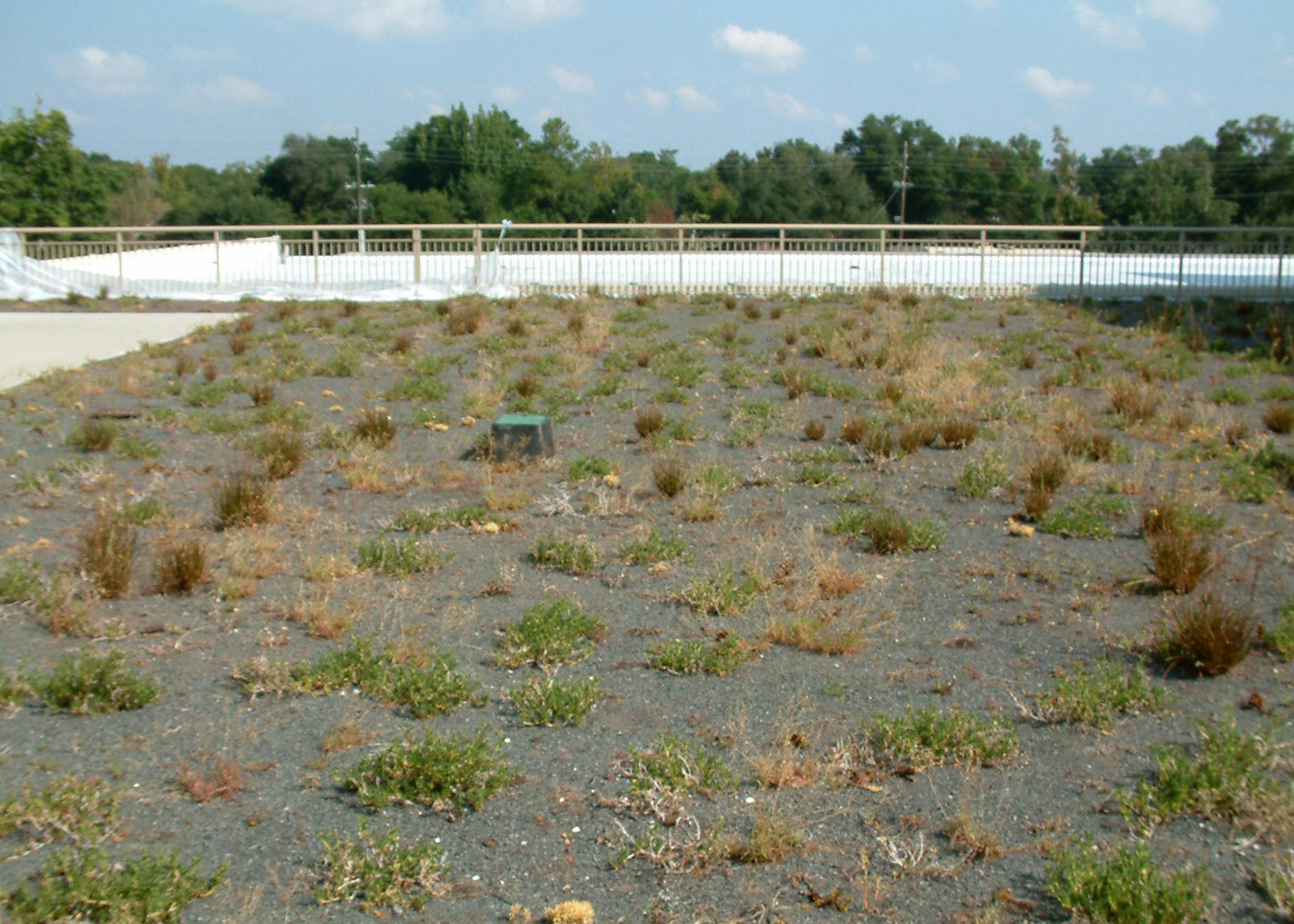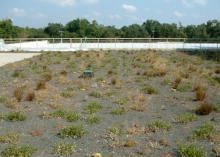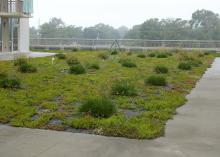Information Possibly Outdated
The information presented on this page was originally released on January 10, 2013. It may not be outdated, but please search our site for more current information. If you plan to quote or reference this information in a publication, please check with the Extension specialist or author before proceeding.
Green roof provides chance for research
GULFPORT -- Horticulture scientists at Mississippi State University are studying and recording the effects of the coastal climate on rooftop gardens in Gulfport.
When they learned the eight green roofs at the Armed Forces Retirement Home were struggling to survive, Christine Coker and Gary Bachman, both horticulture scientists at MSU’s Coastal Research and Extension Center, knew they could help.
“We initially got involved because they needed some guidance on care and maintenance,” said Christine Coker, associate research and Extension professor with the Mississippi Agricultural and Forestry Experiment Station. “There are very few green roofs in the area, so the project has also provided us with a chance to do a case study.”
Green roofs consist of a system of specialized materials placed in layers on a properly reinforced roof. The layers include a vapor control material, thermal insulation, a support panel, a waterproof and root repellant material, a drainage material and a filter membrane. Plants are placed in the top layer, which is a growing medium such as expanded shale.
Coker and Bachman, an associate Extension and research professor of horticulture with MSU’s Extension Service and MAFES, are studying how the coastal climate affects the microenvironments of green roofs. They gather data, such as the median air temperature, humidity, moisture content of the plant medium, and saltwater spray exposure.
“Not much data exists on green roofs, especially in coastal areas,” Bachman said. “There is a band that runs along the Gulf Coast and part of the way up the East coast that experiences similar conditions. All of those areas will benefit from the insight we gain about the ecosystem of green roofs in a coastal climate.”
The 78,000-square-foot green roof system was a requirement for the Armed Forces Retirement Home to be certified through the U.S. Green Building Council’s Leadership in Energy and Environmental Design program. All newly constructed federal buildings must be LEED certified. Certification measures, like installing green roofs, increase biodiversity and reduce energy consumption, erosion and pollution. They also provide beautiful spaces for residents, staff and visitors to socialize in and enjoy.
“Requirements aside, the aesthetic quality of the roofs is extremely important because this is the veterans’ home,” Coker said. “They want to be able to enjoy looking at and being in the space.”
The green roof at the retirement facility originally supported 13 varieties of cactus-like plants called succulents and sedums. The green roofs sit atop the first floor and are visible from the veterans’ apartments, which rise above in towers.
Nine of the original plant varieties remain and are doing well. Coker and Bachman are now preparing to replace some of the plants that died with better-suited varieties.
“The differences in the progress of each roof are interesting and important in the data we are collecting,” Coker said. “The two roofs in the middle are the lushest because they have the protection of the towers on both sides. The roofs on the west side are filling in slower than the others because of their exposure to the sun and salt spray, but they will get there.”
Chuck Dickerson, director of the Armed Forces Retirement Home, said both residents and staff appreciate the expertise given by the university.
“The information and technology the university provided us has made a tremendous difference, and the gardens are flourishing,” Dickerson said. “Dr. Coker and Dr. Bachman have become part of our family here. The residents and staff have come to know them, and we all enjoy working with them.”





